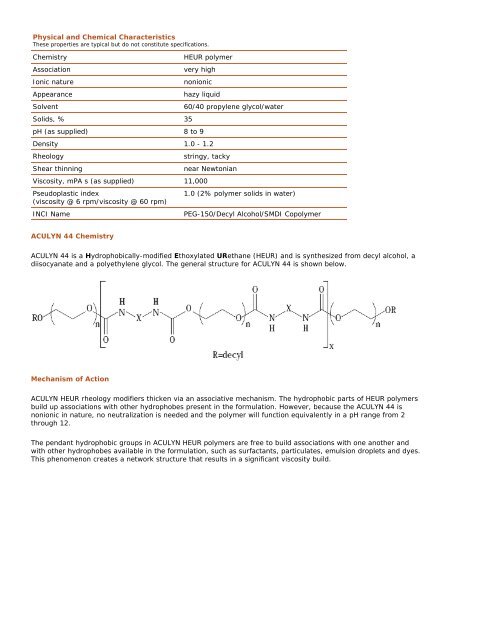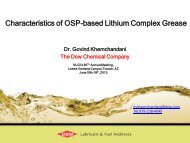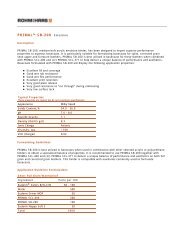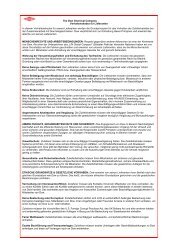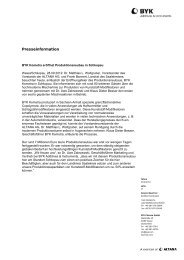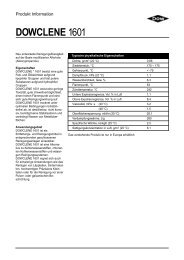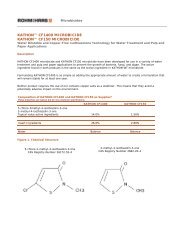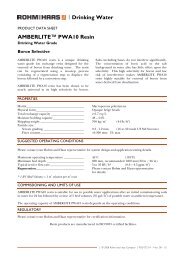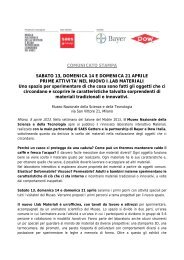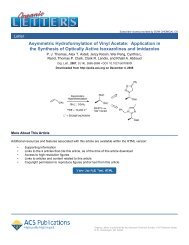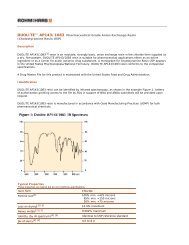ACULYN 44 -- Technical Data Sheet - The Dow Chemical Company
ACULYN 44 -- Technical Data Sheet - The Dow Chemical Company
ACULYN 44 -- Technical Data Sheet - The Dow Chemical Company
You also want an ePaper? Increase the reach of your titles
YUMPU automatically turns print PDFs into web optimized ePapers that Google loves.
Physical and <strong>Chemical</strong> Characteristics<br />
<strong>The</strong>se properties are typical but do not constitute specifications.<br />
Chemistry HEUR polymer<br />
Association very high<br />
Ionic nature nonionic<br />
Appearance hazy liquid<br />
Solvent 60/40 propylene glycol/water<br />
Solids, % 35<br />
pH (as supplied) 8 to 9<br />
Density 1.0 - 1.2<br />
Rheology stringy, tacky<br />
Shear thinning near Newtonian<br />
Viscosity, mPA s (as supplied) 11,000<br />
Pseudoplastic index<br />
(viscosity @ 6 rpm/viscosity @ 60 rpm)<br />
1.0 (2% polymer solids in water)<br />
INCI Name PEG-150/Decyl Alcohol/SMDI Copolymer<br />
<strong>ACULYN</strong> <strong>44</strong> Chemistry<br />
<strong>ACULYN</strong> <strong>44</strong> is a Hydrophobically-modified Ethoxylated URethane (HEUR) and is synthesized from decyl alcohol, a<br />
diisocyanate and a polyethylene glycol. <strong>The</strong> general structure for <strong>ACULYN</strong> <strong>44</strong> is shown below.<br />
Mechanism of Action<br />
<strong>ACULYN</strong> HEUR rheology modifiers thicken via an associative mechanism. <strong>The</strong> hydrophobic parts of HEUR polymers<br />
build up associations with other hydrophobes present in the formulation. However, because the <strong>ACULYN</strong> <strong>44</strong> is<br />
nonionic in nature, no neutralization is needed and the polymer will function equivalently in a pH range from 2<br />
through 12.<br />
<strong>The</strong> pendant hydrophobic groups in <strong>ACULYN</strong> HEUR polymers are free to build associations with one another and<br />
with other hydrophobes available in the formulation, such as surfactants, particulates, emulsion droplets and dyes.<br />
This phenomenon creates a network structure that results in a significant viscosity build.


